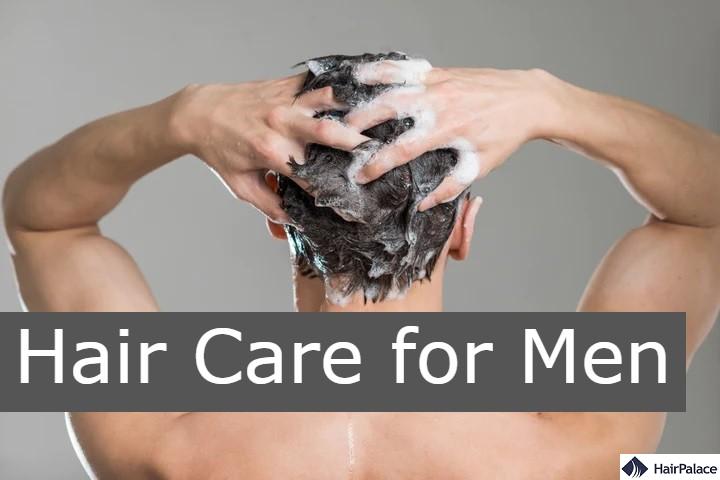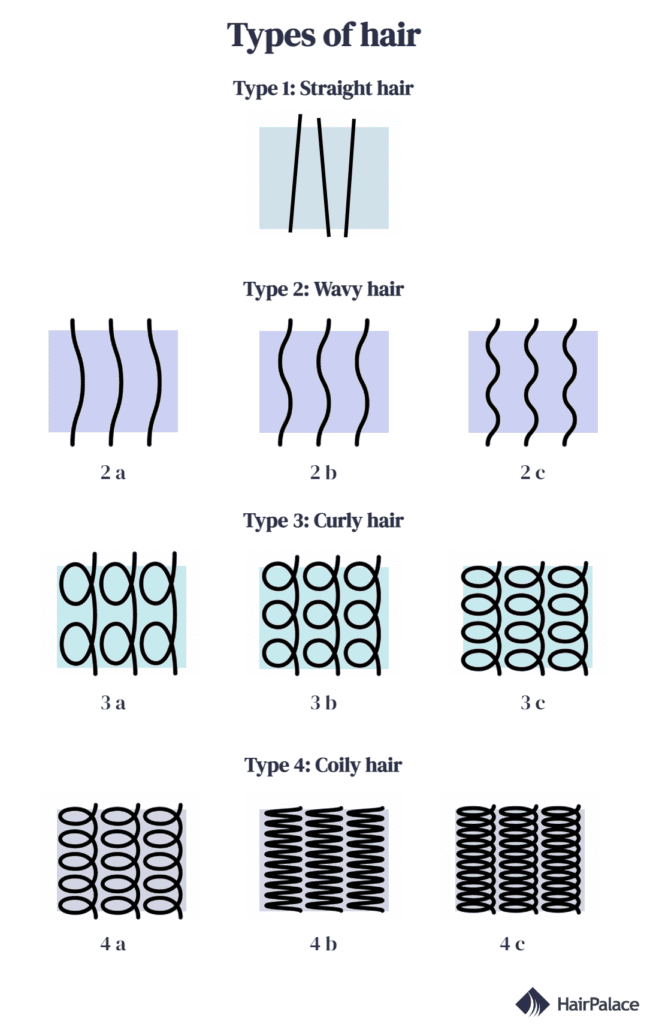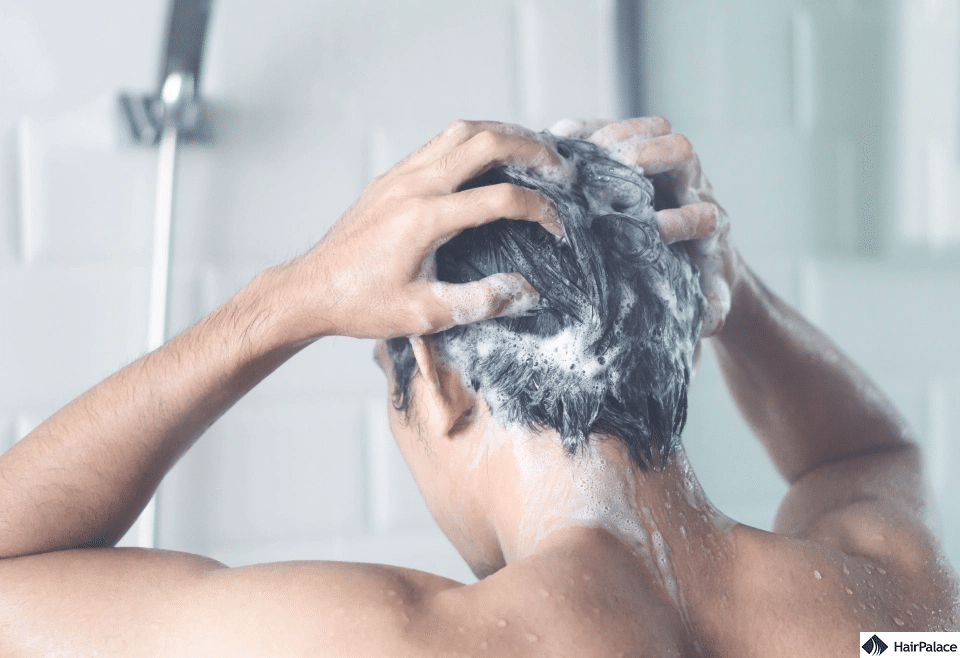Hair Care for Men: 7 Expert Tips

Welcome to the ultimate guide on hair care for men! Whether you’re battling dryness, managing curls, or simply aiming to keep your locks looking their best, we’ve got you covered.
Whether you’re battling dryness, managing curls, or simply aiming to keep your locks looking their best, we’ve got you covered.
From choosing the right products to mastering the perfect routine and saving your hair from hair transplant, this article will walk you through essential hair care tips for men.
- Let’s dive in and transform your hair care game!
- The best hair care routine for men
- Tips for those with a special hair type
- How to keep your hair moisturized
- Prevent oily and dry hair
- Can hair care products help with hair loss?
The best hair care routine for men
Both men and women can achieve beautiful hair if they use the right products and stick to natural ingredients.
The difference in women’s and men’s hair care isn’t like the hair itself, but rather how men and women care for their hair.
Namely, women put far more emphasis on avoiding split ends and shampooing regularly.
Men, on the other hand, tend to put little effort into hair care.
But hair care for men doesn’t have to be complicated, you only need to remember these few tips to maintain your healthy hair follicles.
1. Ensure a clean and healthy scalp
Clean your hair and scalp at least 2 times a week with a mild shampoo to remove excess oil, dirt, and product buildup.
Apply conditioner to the lengths of your hair, avoiding the scalp, to keep your hair hydrated and prevent dryness.
Implementing regular scalp massages to your routine can also help improve circulation, and ensure your hairs receive all the minerals and nutrients they need.
A balanced diet rich in vitamins, minerals, and proteins supports hair and scalp health. Include foods rich in omega-3 fatty acids, vitamin E, and zinc.
Drinking plenty of water helps to keep your scalp hydrated from the inside out.
Lastly, you should avoid tight hairstyles that put unnecessary strain on your hair, and watch out for scalp conditions such as dandruff or psoriasis.
Tight hairstyles such as a man bun, or braids can strain your hair follicles and contribute to hair loss. Opt for looser hairstyles to reduce tension on your scalp.
2. Start a routine and stick to it
Using men’s hair products doesn’t have to be time-consuming or complicated.
Regardless of your specific problem such as brittle hair, dry scalp or dandruff, you will most likely find an easy solution that only takes minutes.
It’s also important to stay persistent and regularly use men’s hair products as well as visit your barber.
Getting groomed every few weeks can do wonders for your appearance, and long-term use of conditioners or shampoos tends to yield the best results.
3. How to find the right hair care products for men
You should select a shampoo based on your scalp condition. For oily hair, look for clarifying or balancing shampoos.
For dry hair, choose moisturizing or hydrating formulas. If you have a sensitive scalp, opt for gentle, sulfate-free options.
If you have specific concerns like thinning hair, dandruff, or itchy scalp, look for products that address these issues directly, such as hair growth serums, anti-dandruff treatments, or scalp soothers.
Choose styling products that work with your hair type and desired look.
Waxes and pomades are great for thicker hair, while light sprays and mousses are better for fine or thin hair.
Avoid products with harsh chemicals like sulfates and parabens, especially if you have a sensitive scalp.
Look for natural ingredients and nutrients that promote hair health, such as biotin, keratin, and natural oils.
Tips for those with a special hair type

Properly maintaining certain types of hair takes special attention.
Here are some of the easiest hair care tips to protect black, grey, curly and long hair.
4. Black hair
Black hair is often curly or coily, making it more susceptible to dryness and breakage.
Keeping it moisturized is crucial; so incorporating a hydrating shampoo and conditioner into your routine can make a significant difference.
Applying natural oils, such as coconut or argan oil, can further lock in moisture and add shine.
It’s also important to minimize heat styling and chemical treatments that can damage the hair’s natural structure.
Remember, gentle handling and patience are key; black hair thrives on consistent care and minimal manipulation, ensuring it remains healthy and strong.
5. Long hair care for men
Long hair is more prone to tangles, breakage, and split ends due to its length and the time it takes for natural oils to travel from the scalp to the ends.
Incorporating a nourishing hair care routine is vital, starting with a mild shampoo and a moisturizing conditioner to keep the hair hydrated and manageable.
Regular deep conditioning treatments can also help restore moisture and elasticity, especially for hair that’s frequently exposed to heat styling or environmental stressors.
It’s important to minimize the use of heat styling tools and when you do use them, always apply a heat protectant to shield the hair from damage.
Detangling with a wide-tooth comb and trimming the ends regularly can prevent split ends from working their way up the hair shaft, which can lead to breakage.
When styling, avoid tight hairstyles that can pull on the roots and potentially lead to hair loss. Instead, opt for loose braids or ponytails that minimize stress on the hair.
6. Grey hair
As hair greys, it changes texture and structure, often becoming coarser and more prone to dryness.
The lack of pigment makes grey hair more susceptible to yellowing from environmental factors like pollution and sun exposure.
To maintain the natural beauty of grey hair, it’s essential to use products specifically formulated for it.
These products often include violet or blue pigments that neutralize brassy tones, ensuring the hair retains its silvery or white hue.
Moisturizing is key; look for hydrating shampoos and conditioners that cater to dry hair to keep grey locks soft and manageable.
A leave-in conditioner or hair oil can also provide extra nourishment and shine.
Protection from the sun is crucial to prevent discolouration, so incorporating products with UV protection or wearing a hat outdoors can be beneficial.
7. Curly hair care for men
Caring for men’s curly hair revolves around embracing its natural texture while addressing common concerns such as dryness, frizz, and tangling.
The unique structure of curly hair makes it more prone to moisture loss, leading to the aforementioned issues.
The foundation of a good curly hair routine is using a gentle, sulfate-free shampoo that cleanses without stripping natural oils, coupled with a hydrating conditioner that restores moisture and elasticity.
Hydration is key for curly hair, so incorporating a leave-in conditioner or a curl cream can significantly enhance curl definition and manageability.
These products provide an additional moisture layer, crucial for keeping curls soft and reducing frizz.
Curly hair should be detangled gently to avoid breakage, preferably when it’s wet and conditioned using a wide-tooth comb or fingers.
This minimizes damage and helps to distribute products evenly throughout the hair.
How to keep your hair moisturized

Keeping your hair moisturized is essential for maintaining its health, shine, and elasticity, regardless of your hair type.
Look for products containing natural moisturizers like glycerin, aloe vera, and shea butter, and oils like coconut, argan, or jojoba.
Regular deep conditioning treatments, at least once a week, can significantly improve moisture retention.
These treatments penetrate deeper into the hair shaft, providing long-lasting hydration.
After moisturizing, seal in that moisture with a light layer of oil or butter. This step is crucial to prevent moisture loss, especially for curly or oily hair types.
Jojoba, argan, and coconut oils are great options, as they closely mimic the hair’s natural oils.
Sun exposure, wind, and cold weather can strip moisture from your hair. Protect your hair by wearing hats or using hair products with UV protection.
Overwashing can strip your hair of its natural oils, leading to dryness.
Depending on your hair type, reducing the frequency of washes can help maintain its natural moisture balance.
Hydration starts from within. Drinking enough water ensures that your body, including your hair, is adequately hydrated.
A diet rich in vitamins and minerals supports overall health, including hair health.
Foods high in omega-3 fatty acids, vitamin E, and antioxidants can help keep your hair moisturized and healthy.
Prevent oily and dry hair
Preventing both oily and dry hair requires a balanced approach to hair care, targeting the root causes of oil production and dryness while maintaining the scalp and hair’s natural moisture.
For Oily Hair:
- Wash Regularly, But Don’t Overdo It: Find a balance in your washing routine. Washing your hair too frequently can strip it of its natural oils, prompting the scalp to produce even more oil.
- Use the Right Shampoo: Opt for a mild, clarifying shampoo that can help control excess oil without drying out your scalp.
- Condition Carefully: Apply conditioner only to the ends of your hair, avoiding the scalp, to prevent additional oiliness at the roots.
- Rinse Thoroughly: Ensure all shampoo and conditioner are thoroughly rinsed out of your hair, as residue can contribute to oiliness.
- Limit Touching Your Hair: Frequently touching your hair can transfer oils from your hands to your hair, increasing oiliness.
For Dry Hair:
- Moisturizing Products: Use shampoos and conditioners formulated for dry hair. These products are designed to add moisture back into your hair, helping to keep it hydrated.
- Deep Conditioning Treatments: Incorporate a deep conditioning treatment into your routine once a week. These treatments can penetrate deeper into the hair shaft to nourish and hydrate.
- Reduce Heat Styling: Heat-styling tools can exacerbate dryness. When possible, allow your hair to air dry, and use heat-protectant products when you do use heat.
- Protect Your Hair: From the sun, wind, and cold—all of which can strip moisture. Use leave-in conditioners or oils to add a protective layer.
- Trim Regularly: This removes split ends, which can lead to further dryness and breakage.
Can hair care products help with hair loss?
Hair care products can play a role in addressing hair loss, depending on the underlying cause of the hair loss itself.
Products that are rich in proteins, vitamins, and minerals can help strengthen the hair shaft, reducing breakage and thinning caused by external damage.
Ingredients like keratin, biotin, and panthenol are known to reinforce hair structure and improve its resilience.
Products formulated to improve scalp health can indirectly prevent hair loss by creating a healthy environment for hair growth.
This includes shampoos and treatments designed to address dandruff, scalp psoriasis, and other conditions that might lead to hair thinning.
Some products contain active ingredients like minoxidil, which is FDA-approved to treat hair loss and stimulate hair growth.
Natural ingredients like peppermint oil, caffeine, and saw palmetto are also popular in hair care products for their potential to promote hair growth, though their effectiveness can vary.
For hair loss related to hormonal imbalances, some products contain ingredients that act as anti-androgens (e.g., spironolactone) which can help reduce hair thinning.
Hair Care for Men FAQ
To care for men’s curly dry hair, use a sulfate-free shampoo to gently cleanse without stripping natural oils, and regularly condition with a hydrating conditioner to add moisture. Incorporate a deep conditioning treatment weekly for extra hydration. Use leave-in conditioners or curl creams to define curls and reduce frizz. Minimize heat styling and let hair air dry when possible. Detangle gently with a wide-tooth comb or fingers to prevent breakage. Trim regularly to avoid split ends. Protect hair from harsh weather by wearing a hat or using protective products.
For men with long hair, wash it 2-3 times a week with a mild shampoo to prevent drying out, and use conditioner to keep it soft and manageable. Apply a leave-in conditioner or hair oil to the ends to reduce split ends and breakage. Detangle gently with a wide-tooth comb, especially when wet. Minimize the use of heat styling tools, and when necessary, use a heat protectant. Regular trims every 6-8 weeks help prevent split ends. Protect your hair from sun and pollution with hats or protective hair products. Finally, maintain a healthy diet and stay hydrated to promote overall hair health.
For men with curly hair, use a sulfate-free shampoo to cleanse gently without stripping moisture, and always follow with a hydrating conditioner. Apply a leave-in conditioner or curl-defining cream to damp hair to enhance curls and manage frizz. Detangle gently using a wide-tooth comb or your fingers to minimize breakage. Limit the use of heat styling tools and let hair air dry when possible. Consider a microfiber towel or a t-shirt to gently blot hair dry instead of rubbing. Trim regularly to prevent split ends and maintain shape. Protect your curls from harsh weather with suitable products or headwear.
Last medically reviewed on July 10th, 2024
- Hillmer AM, Hanneken S, Ritzmann S, Becker T, Freudenberg J, Brockschmidt FF, Flaquer A, Freudenberg-Hua Y, Jamra RA, Metzen C, Heyn U, Schweiger N, Betz RC, Blaumeiser B, Hampe J, Schreiber S, Schulze TG, Hennies HC, Schumacher J, Propping P, Ruzicka T, Cichon S, Wienker TF, Kruse R, Nothen MM. Genetic variation in the human androgen receptor gene is the major determinant of common early-onset androgenetic alopecia. Am J Hum Genet. 2005 Jul;77(1):140-8. doi: 10.1086/431425. Epub 2005 May 18.https://pubmed.ncbi.nlm.nih.gov/15902657?_ga=2.136331570.308835823.1710407626-1445369923.1705490629
- Schweiger ES, Boychenko O, Bernstein RM. Update on the pathogenesis, genetics and medical treatment of patterned hair loss. J Drugs Dermatol. 2010 Nov;9(11):1412-9.https://pubmed.ncbi.nlm.nih.gov/21061765?_ga=2.136331570.308835823.1710407626-1445369923.1705490629
- Everyday hair care by the American Academy of Dermatology Association https://www.aad.org/public/everyday-care/hair-scalp-care/hair


